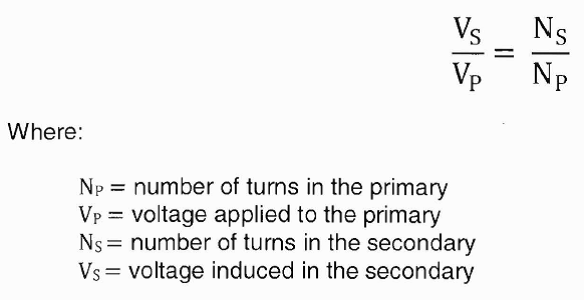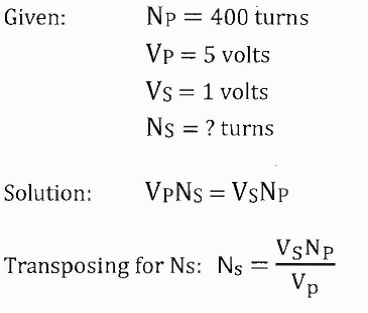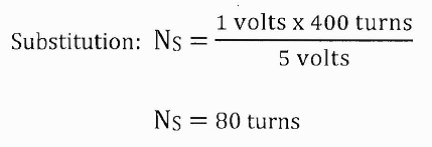Transformers » Turns and voltage ratios
Turns and Voltage Ratios
The total voltage induced into the secondary winding of a transformer is determined mainly by the ratio of the number of turns in the primary to the number of turns in the secondary, and by the amount of voltage applied to the primary. Part (A) of the following figure shows a transformer whose primary consists of ten turns of wire and secondary consists of a single turn of wire. You know that as lines of flux generated by the primary expand and collapse, they cut both the ten turns of the primary and the single turn of the secondary. Since the length of the wire in the secondary is approximately the same as the length of the wire in each turn in the primary, EMF induced into the secondary will be the same as the EMF induced into each turn in the primary. This means that if the voltage applied to the primary winding is 10 volts, the Back-EMF in the primary is almost 10 volts. Thus, each turn in the primary will have an induced Back-EMF of approximately one-tenth of the total applied voltage or one volt. Since the same flux lines cut the turns in both the secondary and the primary, each turn will have an EMF of one volt induced into it. The transformer in part (A) has only one turn in the secondary, thus, the EMF across the secondary is one volt.
FIGURE
The transformer represented in part (B) has a ten-turn primary and a two-turn secondary. Since the flux induces one volt per turn, the total voltage across the secondary is two volts. Notice that the volts per turn are the same for both primary and secondary windings. Since the Back-EMF in the primary is equal (or almost) to the applied voltage, a proportion may be set up to express the value of the voltage induced in terms of the voltage applied to the primary and the number of turns in each winding. This proportion also shows the relationship between the number of turns in each winding and the voltage across each winding. This proportion is expressed by the equation:

Notice the equation shows that the ratio of secondary voltage to primary voltage is equal to the ratio of secondary turns to primary turns.
The equation can be written as:
VSNP = VPNS
The following formulas are derived from the above equation:

If any three of the quantities in the above formulas are known, the fourth quantity can be calculated.
Example: A transformer has 200 turns in the primary, 50 turns in the secondary, and 120 volts applied to the primary (VP). What is the voltage across the secondary (Vs)?

Example: There are 400 turns of wire in an iron-core coil. If this coil is to be used as the primary of a transformer, how many turns must be wound on the coil to form the secondary winding of the transformer to have a secondary voltage of one volt if the primary voltage is five volts?


